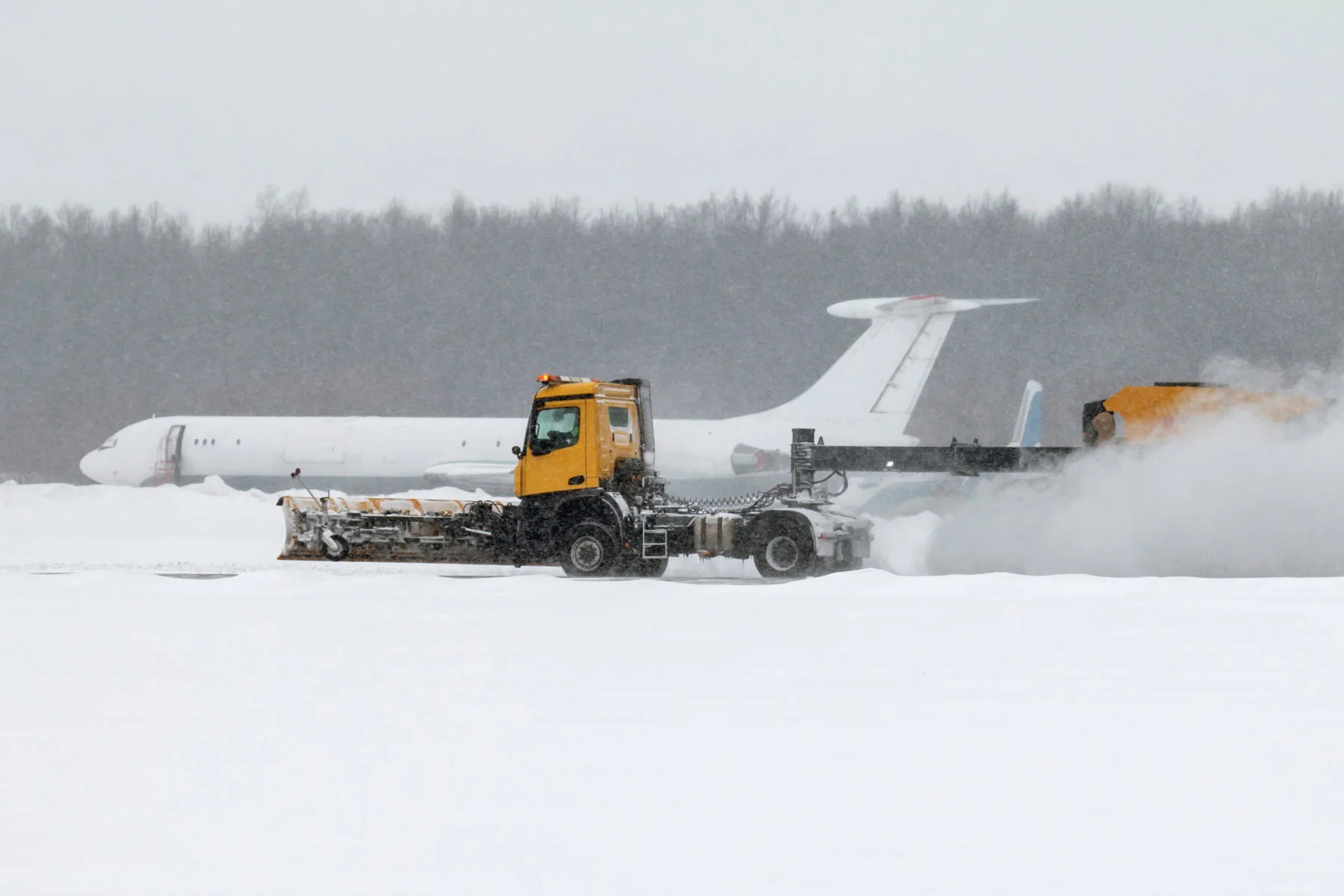How to prepare for airport winter operations
| Company | AIRDAT Ltd |
|---|---|
| Date | 22.11.2022 |
The airport industry has seen major upheaval in recent times and even two years on from lockdown (and the subsequent disruption this caused), flight delays and cancellations are still making the news. As the aviation industry waves goodbye to the summer holidays and prepares to slow down a little, a new threat has arrived: winter weather. The cost of runway closures and flight cancellations can enter into the millions when extreme weather strikes. Thankfully, these expensive problems can be mitigated with adequate and timely training for airport winter operations teams.
 Can aircraft take-off and land in snowy weather?
Can aircraft take-off and land in snowy weather?
If you’re due to fly and notice a blanket of thick snow outside your window, it may be wise to check that your flight is still due to depart on time but these days, snow and ice do not automatically lead to grounded flights. In fact, if the right precautions are taken then it’s possible for flights to leave on time whatever the weather.
Why is deicing essential?
Ice build up can affect the plane’s ability to fly. Snow, ice and frost can all alter the shape of the wing which can affect its ability to generate lift. If lift is significantly reduced, there’s the risk of an aerodynamic stall. Ice build up can also stop the engine from working. Back in 1992, USAir Flight 405 crashed shortly after take off, partly because deicing procedures hadn’t been carried out effectively. If the idea of flying in the winter is starting to sound rather alarming then rest assured that the correct processes, training and Standard Operating Procedures are more than enough to ensure that flights go off without a hitch.
How are planes deiced?
Modern aircraft are all fitted with anti-ice equipment. The systems often utilise hot air and electrics to heat the wings and engine to prevent ice from forming, and melting it if it does. The deicing systems require regular monitoring to ensure that the processes are effective and ground crews will be on hand to double check that everything is working as it should and to offer extra protection in the form of glycol-based fluid sprayed onto the aircraft surfaces. Once airborne, all passenger aircraft have the capability to bleed hot air to the surfaces of the tail and wing to prevent ice building up.
How airports prepare for winter operations
The most important thing airports, airlines and aviation companies can do is plan ahead and be proactive with their precautions. Anti-icing solutions and snow clearing equipment must be in place and ready to be called upon whenever necessary. Similarly, all ground crew and airside drivers must be fully trained and versed in all winter operations.
How does life differ for airside workers in winter?
As you can imagine, the life of an airside driver or worker will be very different in extreme weather conditions. Additional safeguards are required to keep all personnel and customers safe and all workers must be well-versed in these precautions. Here’s a taster of how staff will need to alter the way they do their jobs.
Airside drivers
Airside drivers will need to alter the way they work in adverse conditions. Whatever the weather conditions drivers will need to ensure their vehicles are up-to-date with all certification and also in good, working order by completing a pre-trip inspection. In addition to these, working in adverse conditions means they must also reduce speeds and increase stopping distances.
More thorough checks may be performed on things such as wiper washers, de misters and tyre condition; and winter weather can potentially cause an increase in hydraulic leaks due to frozen pipes. Airside drivers will also need to be more aware and take the necessary precautions with extra winter operations vehicles on the airfield.
Airside workers
Airside workers have a responsibility to report any ice or frost in aprons, runways, passenger walkways and roads. They also must be aware of what is required in the event of low visibility. LVPs (Low visibility procedures) include additional signage, the closures of certain routes. Strong winds are also likely to be a consideration for airside teams.
How important is airport winter operations training for staff that work airside?
It goes without saying that regular staff training at an airport is vital and necessary. All personnel must be trained, certified and fully familiar with their roles as a matter of course but as winter rolls around, staff could be forgiven for having forgotten the precise procedures for inclement weather. Thankfully, that’s where Winter Operations Training comes in.
Check out the case study for our Winter Operations Training with Heathrow Airport.
Winter Operations Training will differ depending on an individual’s job role and requirements. At AIRDAT we’ve created first-in-class training material for some of the biggest airports in the world. We offer a wide variety of training methods to suit requirements. Online or elearning may suffice, in which case our trainers can work with as few or as many staff as necessary and, thanks to our simple eLearning tool, deployment of material is quick and easy.
We can also build bespoke 3D animations to enhance the user experience which is ideal for Winter Ops training. Not only can this allow staff to prepare for real-life scenarios (and see how the airport might look in extreme weather conditions) but it has also been shown to improve engagement rates. Find out more about our 3D training videos here.
Of course, practical training is eminently possible with AIRDAT too. All of our trainers are highly experienced training facilitators who have extensive experience in aviation.
Want to know more about AIRDAT could help your airport get ready for winter?
Contact
19 Cherry Garden Road
Canterbury
United Kingdom
CT2 8EL
- +44 (0)1227 200066

